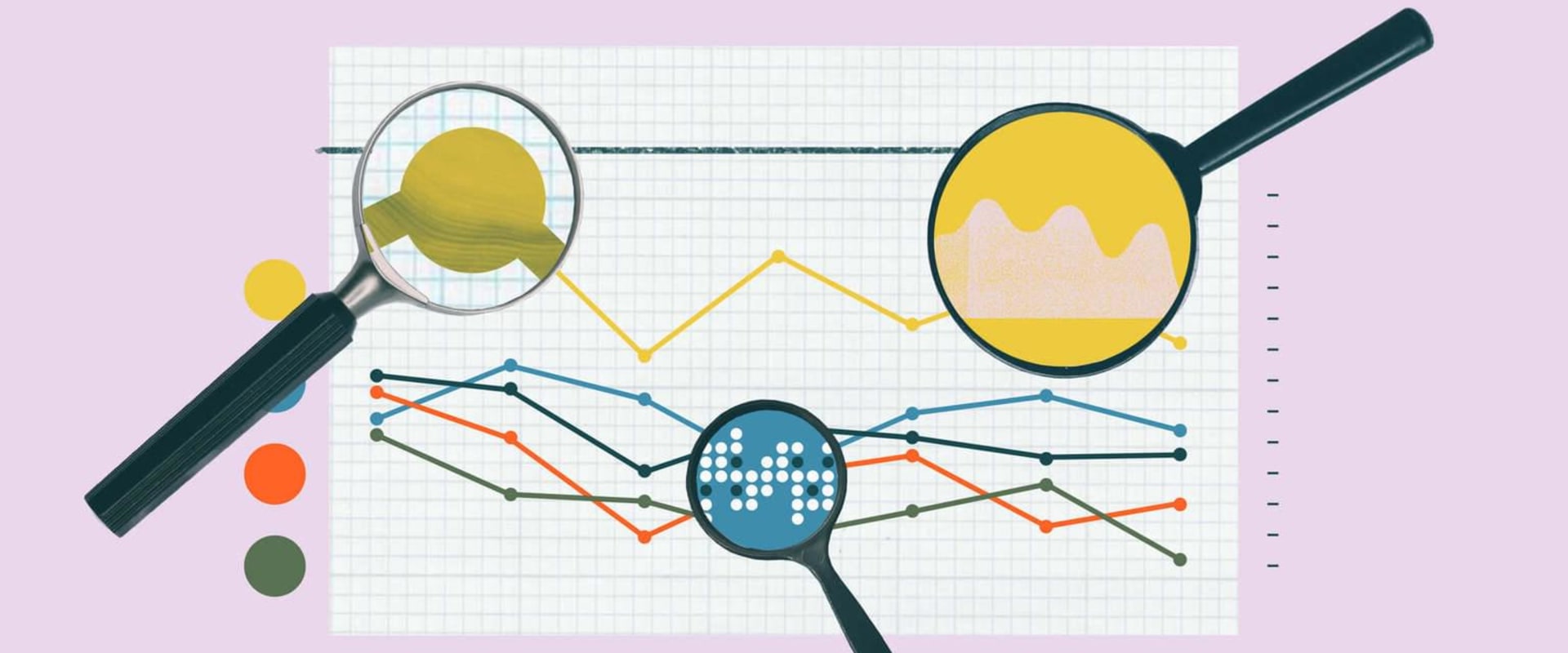In today's fast-paced business world, data is everywhere. Companies are constantly collecting and analyzing data to gain insights and make informed decisions. One key aspect of this data analysis process is identifying trends and patterns. By understanding trends and patterns, companies can better understand their customers, make more accurate predictions, and ultimately, drive business growth.
In this article, we will explore the importance of identifying trends and patterns in CRM analytics and provide practical tips on how to do so effectively. Whether you are new to CRM analytics or looking to enhance your data analysis skills, this article will provide valuable insights and strategies for identifying trends and patterns in your data. In today's fast-paced business world, customer relationship management (CRM) has become a crucial aspect for companies of all sizes. With the increasing amount of customer data available, it is essential to identify trends and patterns to improve your CRM strategy. Identifying trends and patterns in CRM analytics is crucial for gaining insights into your customers' behavior and preferences, which can help you make informed business decisions. Effective CRM analytics is dependent on identifying trends and patterns accurately.
By analyzing patterns in customer data, you can identify potential opportunities and challenges, allowing you to tailor your approach to better meet their needs. This enables you to stay ahead of the competition and retain loyal customers. There are several tools and software available for effective CRM analytics. These tools can help you collect, analyze, and interpret large amounts of customer data in real-time. By utilizing these tools, you can gain valuable insights into customer behavior and preferences, allowing you to make data-driven decisions. Successful implementation and training are crucial for getting the most out of your CRM analytics.
It is essential to train your employees on how to use the tools effectively and interpret the data correctly. This will ensure that they can utilize the insights gained from CRM analytics to improve customer relationships and enhance overall business performance. Integrating CRM with other business processes can also enhance your overall strategy. By connecting your CRM data with other departments such as sales, marketing, and customer service, you can gain a more comprehensive understanding of your customers. This allows for a more personalized and seamless customer experience, leading to increased satisfaction and loyalty. The benefits of using analytics in CRM are significant.
By identifying trends and patterns in customer data, you can improve customer retention, increase sales, and enhance overall business performance. It also allows for more targeted marketing campaigns, better customer segmentation, and improved customer service. In conclusion, identifying trends and patterns in CRM analytics is crucial for optimizing your customer relationships. By understanding the importance of this aspect of your CRM strategy and utilizing the right tools and software, along with successful implementation and training, you can gain valuable insights into your customers and make data-driven decisions to improve your overall business performance.
The Importance of Identifying Trends and Patterns
In today's fast-paced business world, customer relationship management (CRM) has become a crucial aspect for companies of all sizes. Identifying these trends and patterns allows companies to gain valuable insights into their customers' behavior and preferences, which can then be used to make informed business decisions. By analyzing data and identifying trends and patterns, businesses can understand how their customers interact with their products or services, what drives their purchasing decisions, and what factors influence their loyalty.This information is crucial for creating targeted marketing campaigns, developing effective sales strategies, and improving overall customer satisfaction. Moreover, identifying trends and patterns in CRM analytics can also help businesses anticipate future customer needs and preferences. By understanding current trends, companies can make proactive changes to their CRM strategies to meet the evolving demands of their customers. Overall, the importance of identifying trends and patterns in CRM analytics cannot be overstated. It provides businesses with valuable insights into their customers, helps them make data-driven decisions, and ultimately leads to improved customer relationships and increased revenue.
Tools and Software for Effective CRM Analytics
When it comes to identifying trends and patterns in CRM analytics, having the right tools and software is essential. These tools can help you analyze large amounts of customer data, identify patterns, and make data-driven decisions to improve your CRM strategy. There are numerous options available for CRM analytics tools and software, each with its own set of features and capabilities.It is important to explore these options and choose the ones that best suit your specific needs and budget. Some popular choices for CRM analytics tools include Salesforce Analytics, Microsoft Dynamics 365, and SAP CRM Analytics. These platforms offer powerful data analysis and reporting capabilities, along with customizable dashboards and visualizations to help you identify trends and patterns in your customer data. In addition to these larger platforms, there are also many specialized tools and software specifically designed for CRM analytics. These may include sentiment analysis tools, social media monitoring tools, and predictive analytics software. By exploring these options, you can find the right combination of tools to meet your specific needs and improve your CRM strategy.
Integrating CRM with Other Business Processes
One of the key elements in successful CRM analytics is the integration of CRM with other business processes.By streamlining your CRM strategy with other areas such as sales, marketing, and customer service, you can gain a holistic view of your customers and identify trends and patterns more effectively. Integrating your CRM data with your sales process can help you track customer interactions and identify potential upselling opportunities. By analyzing the data from your CRM system alongside your sales data, you can identify which products or services are most popular among certain customer segments and adjust your sales strategy accordingly. Incorporating your CRM data into your marketing efforts can also help you identify trends and patterns. By analyzing customer behavior and preferences, you can tailor your marketing campaigns to target specific demographics or interests. This can lead to more effective campaigns and higher conversion rates. Furthermore, integrating your CRM with your customer service processes can provide valuable insights into customer satisfaction and loyalty.
By analyzing customer interactions and feedback, you can identify areas for improvement and make necessary changes to enhance the overall customer experience. By streamlining your CRM strategy with other business processes, you can gain a more comprehensive understanding of your customers and their behaviors. This will enable you to identify trends and patterns more accurately, leading to improved customer relationships and ultimately, increased business success.
The Benefits of Using Analytics in CRM
CRM analytics is a powerful tool for businesses to gain insights into their customer relationships. By utilizing analytics, companies can identify trends and patterns that can help improve their CRM strategy and ultimately enhance customer relationships. One of the main benefits of using analytics in CRM is the ability to gain a deeper understanding of customer behaviors and preferences.With the data collected, businesses can segment their customers based on various factors such as demographics, purchase history, and interactions with the company. This allows for more targeted and personalized marketing efforts, leading to better customer satisfaction and loyalty. Another advantage of using analytics in CRM is the ability to track and measure the success of customer relationship initiatives. By analyzing data, businesses can see which strategies are working and which ones need improvement. This allows for continuous optimization of the CRM strategy, leading to stronger and more profitable customer relationships. Furthermore, using analytics in CRM can help identify potential issues or areas for improvement in the customer experience.
By monitoring customer data and feedback, businesses can quickly address any pain points or concerns that may arise. This proactive approach can help prevent customer churn and retain valuable customers. Overall, incorporating analytics into CRM can greatly benefit businesses by improving their understanding of customers, measuring the success of initiatives, and identifying areas for improvement. With the fast-paced nature of business today, utilizing analytics is essential for staying competitive and continuously improving customer relationships.
Tips for Successful Implementation and Training
In order to maximize the potential of CRM analytics, it is crucial to have a successful implementation and training process in place. Here are some tips to help you achieve this:1.Define your objectives: Before diving into CRM analytics, it is important to have a clear understanding of what you want to achieve.Identify specific goals and KPIs that you want to track and improve with the help of analytics.
2.Choose the right CRM tool:
With a wide range of CRM tools available in the market, it is important to choose one that best fits your business needs and goals. Consider factors such as scalability, ease of use, and integration capabilities.3.Invest in proper training:
A CRM tool is only as effective as the people using it. Make sure to provide comprehensive training to all employees who will be using the tool, including managers and sales representatives.4.Utilize data visualization:
Data visualization is a powerful tool that can help you identify trends and patterns more easily. Make use of charts, graphs, and dashboards to present your data in a visually appealing and easy-to-understand manner.5.Regularly review and analyze your data:
Analyzing your CRM data should be an ongoing process.Set a regular schedule to review your data, identify any changes or trends, and make necessary adjustments to your strategy.



